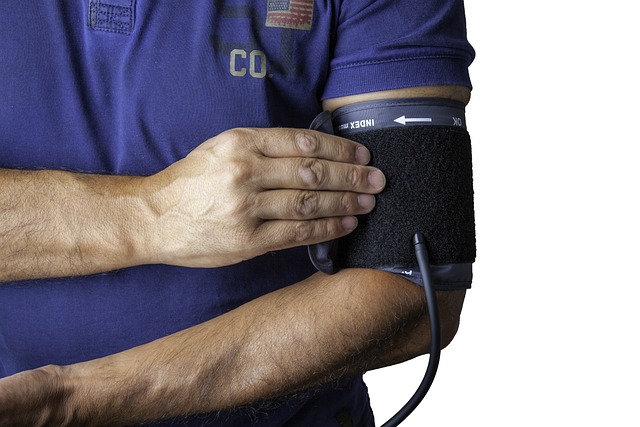Core stability is essential for overall physical health and proper posture. Weak core muscles lead to imbalances, causing issues like back pain and neck stiffness. Effective solutions include yoga, Pilates, ergonomic workspace adjustments, chiropractic adjustments, and posture support braces. Maintaining good posture is crucial in today's sedentary world; combining holistic practices with ergonomic tips can significantly improve core strength and overall alignment, reducing future health issues.
Looking to enhance your core stability and improve your posture? This comprehensive guide explores powerful posture and alignment solutions. Discover the pivotal role of core stability in maintaining optimal posture, and learn effective exercises like yoga for posture correction, Pilates routines, and chiropractic adjustments as natural remedies.
Uncover ergonomic workspace tips for all-day support, and understand when to consider posture support braces as a valuable tool. Transform your physical well-being with these evidence-based methods and reclaim control over your posture.
- Understanding Core Stability and Its Role in Posture
- Yoga, Pilates, and Chiropractic Adjustments: Natural Posture Correction Exercises
- Ergonomic Workspace Setup for Optimal Alignment and Support
- Exploring Braces and Other Posture Support Tools: When to Consider Them
Understanding Core Stability and Its Role in Posture

Core stability is a fundamental aspect of overall physical well-being, playing a pivotal role in maintaining proper posture and alignment. The core, comprising muscles like the abdominals, lower back, and glutes, acts as the body’s foundation, supporting the spine and enabling efficient movement. Weak core muscles can lead to postural imbalances, causing issues such as back pain, neck stiffness, and increased risk of injury during physical activities.
Posture and alignment solutions often involve a multi-faceted approach, combining exercises like yoga for posture correction, Pilates routines for strengthening and stretching, and even ergonomic workspace tips to promote better sitting postures. Chiropractic adjustments can also be beneficial in realigning the spine and improving core stability. Additionally, posture support braces offer external assistance, providing temporary relief while the underlying muscles are being strengthened through dedicated core-building exercises.
Yoga, Pilates, and Chiropractic Adjustments: Natural Posture Correction Exercises

Maintaining proper posture and core stability is crucial for overall well-being, especially in today’s sedentary world. Yoga and Pilates are popular practices that offer a range of benefits for postural correction. These ancient disciplines focus on breath control, mindful movement, and precise alignment, which can help strengthen the muscles responsible for holding your body upright. Yoga poses, such as the downward dog or warrior II, stretch and engage the core, while Pilates routines target specific muscle groups to improve posture support.
Chiropractic adjustments also play a significant role in natural posture correction exercises. Chiropractors use gentle manipulation techniques to correct spinal misalignments, which can relieve pressure on nerves and promote better postural alignment. Combining these holistic approaches with ergonomic workspace tips—such as adjusting your chair height and using posture support braces—can lead to significant improvements in core strength and overall posture.
Ergonomic Workspace Setup for Optimal Alignment and Support

Maintaining good posture and alignment is crucial for overall health and well-being, especially when spending long hours at a desk. An ergonomic workspace setup plays a significant role in supporting your core stability and correct posture. Start by ensuring your chair provides adequate lumbar support to maintain the natural curve of your spine. Adjusting the height and angle of your chair to promote a neutral position is key. The monitor should be at eye level, minimizing neck strain, and the keyboard and mouse should be positioned to allow for relaxed elbows and wrists.
Consider incorporating yoga poses or Pilates exercises that focus on strengthening the core muscles and improving alignment. These practices can help correct postural issues and reduce back pain. Simple adjustments like using posture support braces or taking regular breaks to stretch and move can also make a difference. Chiropractic adjustments are another effective option for those seeking relief from chronic postural problems, offering long-lasting benefits when combined with consistent exercise routines.
Exploring Braces and Other Posture Support Tools: When to Consider Them

Many individuals seeking better posture and alignment solutions often wonder when to incorporate posture support tools like braces. These aids can be beneficial for those struggling with persistent postural issues, especially when combined with targeted exercises. Yoga for posture, Pilates for alignment, and ergonomic workspace tips can significantly enhance core strengthening routines.
Chiropractic adjustments play a crucial role in correcting misalignments, offering temporary relief from pain. However, long-term benefits often require consistent practice of posture correction exercises and the use of suitable support braces. This combination empowers individuals to maintain improved posture, reducing the risk of future issues. Additionally, specific alignment therapy techniques can target weak areas, strengthening muscles that support your core and enhancing overall stability.
Strengthening exercises like yoga, Pilates, and chiropractic adjustments offer effective posture correction exercises for improving core stability and alignment. Incorporating these natural alignment therapy methods into your routine can enhance your overall posture and well-being. For persistent issues, consider posture support braces or explore ergonomic workspace tips to create an environment that promotes correct posture. By combining these posture and alignment solutions, you can achieve optimal physical health and comfort.
